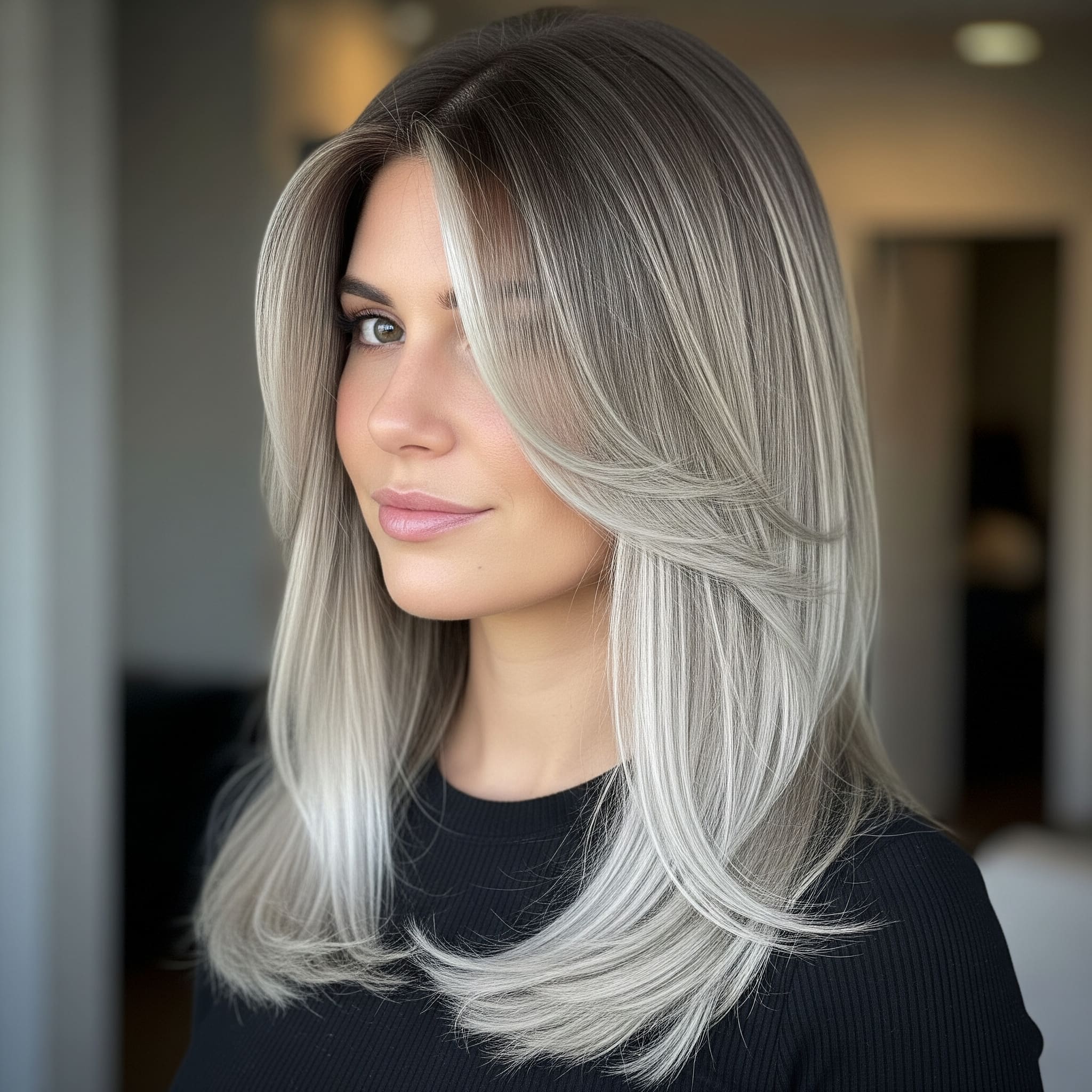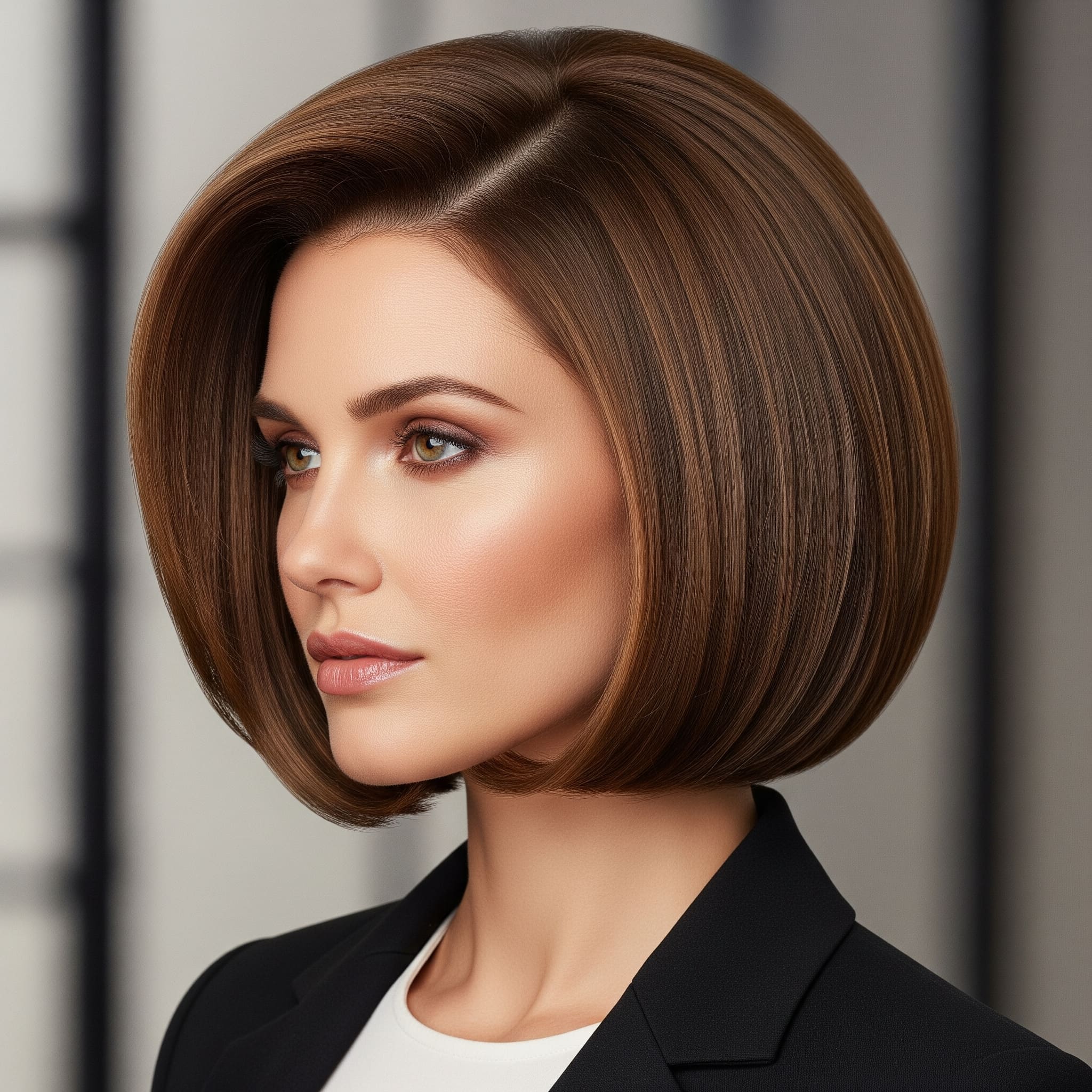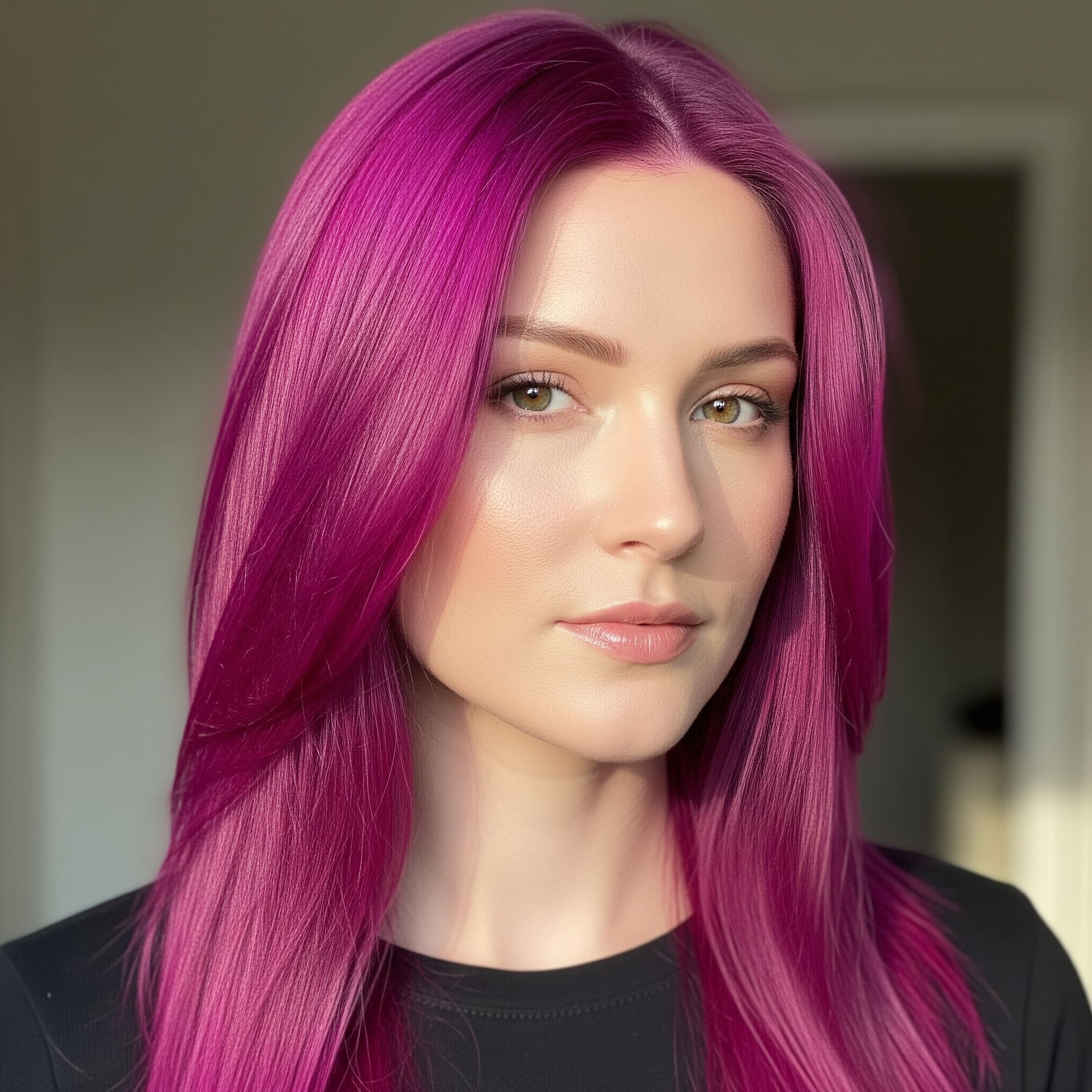Virtual Try-On vs. Reality: Tips for Getting Your AI-Chosen Cut Right
Virtual Try-On vs. Reality: Tips for Getting Your AI-Chosen Cut Right
The virtual try-on technology revolution has transformed how we envision new hairstyles, but translating that perfect AI hairstyle from screen to salon chair requires strategic planning and realistic expectations. While virtual hair apps provide incredible visualization, understanding the nuances between digital perfection and real-world execution ensures your AI-chosen haircut exceeds expectations rather than disappointing.
Recent industry data reveals that 82% of salon clients now arrive with digital references, yet only 47% report complete satisfaction with translating their virtual hairstyle into reality. This gap isn't about technology limitations—it's about understanding how to bridge the virtual vs reality hair divide with expert knowledge, proper communication, and realistic adaptation strategies.
Understanding the Virtual-Reality Gap
Why Virtual and Reality Differ
Virtual try-on apps operate in an idealized digital environment where every strand falls perfectly, lighting remains consistent, and hair texture behaves predictably. Reality introduces variables that even the most sophisticated AI hairstyle generator cannot fully anticipate: natural growth patterns, hair density variations, styling skill levels, and environmental factors.
The most common virtual hair app vs reality discrepancies include:- Texture variations: Your natural hair texture affects how styles fall and move
- Volume differences: Digital styles often appear fuller than achievable with fine hair
- Color complexity: Screen colors may differ from actual dye results
- Maintenance reality: Daily styling time and skill requirements
- Face angle variations: How styles look from different perspectives
The Psychology of Expectation Management
Understanding that AI-chosen haircuts represent aspirational goals rather than exact blueprints helps set realistic expectations. Successful virtual hairstyle translation requires viewing digital results as collaborative starting points for discussion with your stylist, not contractual obligations for exact replication.
Professional stylists report that clients who approach virtual try-on results as inspiration rather than prescription achieve 91% satisfaction rates, compared to 52% for those expecting pixel-perfect duplication.

Critical Factors Affecting Virtual-to-Reality Translation
Hair Texture and Density Analysis
Your natural hair texture reality check forms the foundation for successful style translation. While virtual hair color and cuts look uniform on screen, real hair varies in:
Texture considerations:- Fine hair: May lack volume shown in virtual styles
- Thick hair: Could overwhelm delicate virtual looks
- Curly hair: Natural pattern affects final shape
- Damaged hair: May not hold styles as shown
- Mixed textures: Require adapted techniques
The Color Accuracy Challenge
Virtual hair color appears consistent under perfect digital lighting, but real-world application involves complex chemistry and individual hair history. Factors affecting AI hair color translation include:
Color reality factors:- Previous color history (up to 3 years affects results)
- Natural underlying pigments (determines warmth/coolness)
- Hair porosity (affects color absorption)
- Gray percentage (changes color outcomes)
- Water mineral content (influences color processing)
- Lighting variations (natural vs artificial appearance)

Face Shape and Feature Considerations
While virtual try-on technology accurately maps basic face shape, subtle feature nuances affect how styles actually frame your face. Consider these face shape reality factors:
Real-world adjustments needed:- Asymmetry compensation: Most faces aren't perfectly symmetrical
- Profile considerations: Side view matters as much as front
- Ear position and size: Affects short style proportions
- Neck length: Influences how longer styles fall
- Jawline definition: May require style modifications
Pre-Salon Preparation Strategies
Building Your Virtual Portfolio
Create a comprehensive AI hairstyle portfolio before your salon visit. This virtual haircut preparation should include:
Essential portfolio elements:- Primary choice: Your favorite virtual style (3 angles)
- Alternatives: 2-3 backup options showing flexibility
- Color variations: If considering color change
- Length progression: Showing growing-out phases
- Styling variations: Same cut styled differently
- Problem areas: Current hair issues to address
Hair Health Assessment
Conduct an honest hair health reality check before attempting dramatic changes suggested by virtual try-on apps:
Health evaluation checklist:- Perform strand test (pull test for breakage)
- Document current damage level (1-10 scale)
- Note processing history (last 6 months)
- Assess daily styling routine honestly
- Calculate realistic maintenance time
- Consider lifestyle factors (swimming, exercise)
Research and Stylist Selection
Not all stylists excel at translating virtual hairstyles into reality. Seek professionals who:
Ideal stylist qualifications:- Welcome digital references enthusiastically
- Ask detailed questions about virtual choices
- Explain adaptation strategies clearly
- Offer honest feasibility assessments
- Suggest realistic modifications
- Provide maintenance education

Communication Strategies with Your Stylist
The Consultation Conversation
Transform your AI-chosen haircut from digital dream to reality through strategic consultation communication:
Effective consultation framework:- Show, don't just tell: Present your virtual portfolio immediately
- Explain your attraction: Why this specific style appeals
- Discuss lifestyle honestly: Daily routine and styling time
- Ask about adaptation: How to modify for your hair
- Request process explanation: Understand the steps involved
- Clarify maintenance needs: Weekly and monthly requirements
Translating Virtual Language to Salon Speak
Bridge the virtual vs reality hair communication gap with proper terminology:
Virtual to salon translations:- "AI filter smooth" = "Needs flat iron or blow-dry styling"
- "Perfect waves" = "Requires curling iron or overnight setting"
- "Effortless texture" = "Needs texturizing products and technique"
- "Vibrant color" = "May require bleaching and toning"
- "Instant volume" = "Needs root lift products and blow-drying"
Setting Realistic Milestones
When your virtual hairstyle requires significant change, establish a realistic timeline:
Phased approach planning:- Phase 1: Address hair health and initial cut (Month 1)
- Phase 2: Gradual color transition if needed (Months 2-3)
- Phase 3: Refine cut as hair adjusts (Month 4)
- Phase 4: Perfect styling techniques (Ongoing)
- Phase 5: Maintain achieved look (Month 5+)
Technical Considerations for Different Hair Types
Fine Hair Adaptations
Translating virtual try-on styles to fine hair requires specific modifications:
- Add layers strategically: Create movement without thinning
- Use volumizing techniques: Root lift products essential
- Adjust length expectations: Shorter often looks fuller
- Incorporate texture: Waves and curls add dimension
- Color strategically: Highlights create depth illusion
- Volumizing mousse (apply to roots when damp)
- Texture spray (mid-lengths for grip)
- Dry shampoo (refresh and lift between washes)
- Light-hold hairspray (maintain without weighing down)

Thick Hair Modifications
AI hairstyles on thick hair need different approaches:
Thick hair adaptation techniques:- Internal layering: Reduce bulk without losing length
- Thinning strategically: Maintain shape while reducing weight
- Embrace natural volume: Work with density, not against
- Extended processing time: Color and chemicals take longer
- Heavy-duty products: Stronger hold required
Curly and Textured Hair Realities
Virtual hair apps often show styles on straightened hair, requiring translation for natural textures:
Curl-friendly adaptations:- Consider shrinkage factor (30-50% length difference)
- Adapt layers for curl pattern
- Plan for volume expansion
- Account for weather sensitivity
- Build in flexibility for curl variation
Maintenance Reality Check
Daily Styling Time Investment
Compare virtual hairstyle perfection with realistic daily dedication:
Time investment breakdown:- Pixie cuts: 5-10 minutes (product application and styling)
- Bobs: 10-15 minutes (blow-dry and smooth)
- Medium layers: 15-20 minutes (style and set)
- Long styles: 20-30 minutes (dry and style)
- Intricate styles: 30+ minutes (section and detail)
Product Investment Requirements
Your AI-chosen haircut may require new product investments:
Essential product categories:- Cleansing: Specialized shampoo/conditioner (1-2 months supply: $25-50)
- Treatment: Masks and leave-ins (Monthly: $15-30)
- Styling: Hold and texture products (2-3 months: $20-40)
- Finishing: Sprays and serums (3-4 months: $15-35)
- Tools: Brushes, irons if needed (One-time: $50-150)
Professional Maintenance Schedule
Budget for maintaining your virtual try-on inspired look:
Maintenance timeline and costs:- Precision cuts: Every 4-6 weeks ($30-80)
- Color touch-ups: Every 4-8 weeks ($50-150)
- Treatments: Monthly recommended ($20-50)
- Style refresh: Every 2-3 weeks optional ($20-40)
Color Translation Strategies
Understanding Color Theory
Virtual hair color uses RGB screens while real hair involves complex pigment interaction:
Color translation factors:- Screens display additive color (light-based)
- Hair uses subtractive color (pigment-based)
- Natural undertones affect final results
- Multiple sessions often required for dramatic changes
- Maintenance differs from initial achievement
Realistic Color Expectations
Set achievable goals for AI hair color translation:
Color reality guidelines:- Going lighter: Requires bleaching, potentially damaging
- Fashion colors: Need pre-lightening for vibrancy
- Gray coverage: Affects how fashion colors appear
- Natural depth: Determines processing time needed
- Hair history: Previous color affects new results
The Patch Test Imperative
Before committing to virtual hair color choices:
Testing protocol:- Request strand test at consultation
- Test allergies 48 hours before
- Evaluate color on your actual hair
- Assess damage potential
- Preview maintenance requirements
Styling Technique Mastery
Building Your Skill Set
Virtual hairstyles assume professional styling skills. Develop expertise gradually:
Skill development pathway:- Week 1-2: Master basic blow-drying techniques
- Week 3-4: Learn your specific style's requirements
- Week 5-6: Practice speed and efficiency
- Week 7-8: Perfect finishing touches
- Ongoing: Refine and adapt techniques
Tool Investment Guide
Your AI-chosen haircut may require specific tools:
Essential tools by style type:- Smooth styles: Quality blow dryer, flat iron, round brush
- Textured looks: Diffuser, texturizing iron, wide-tooth comb
- Curled styles: Appropriate barrel size iron, heat protectant
- Volume focus: Root lift clips, teasing brush, volumizing diffuser
- Precision styles: Sectioning clips, fine-tooth comb, edge control
Product Application Techniques
Master product use for virtual vs reality hair success:
Application best practices:- Less is more: Start with minimal product
- Emulsify properly: Warm between palms first
- Section strategically: Ensure even distribution
- Layer correctly: Light to heavy, wet to dry
- Focus placement: Roots for volume, ends for smoothness
Troubleshooting Common Issues
When Results Don't Match
Address virtual try-on vs reality discrepancies:
Problem-solving strategies:- Too flat: Add volumizing products and techniques
- Too bulky: Request thinning or texturizing
- Wrong color tone: Use toning treatments
- Difficult styling: Simplify routine or adjust cut
- Damage evident: Prioritize treatment over styling
The Growing-Out Strategy
Plan for evolution beyond your virtual hairstyle:
Transition planning:- Document growth at monthly intervals
- Adjust styling techniques as length changes
- Plan trim schedule to maintain shape
- Consider interim styles during transition
- Use accessories during awkward phases

Success Stories and Case Studies
The Cautious Color Convert
Sarah used virtual try-on technology to test rose gold but wisely planned a gradual transition. Starting with subtle highlights, she achieved her AI hair color goal over three months, avoiding damage and shock while building confidence.
Key lessons:- Gradual change ensures hair health
- Building color slowly looks more natural
- Time allows for technique mastery
- Cost spreads over multiple visits
The Texture Transformer
Marcus wanted the sleek virtual hairstyle he'd tested but had naturally coarse hair. His stylist recommended a keratin treatment first, then achieved the look with realistic daily styling expectations of 15 minutes versus the 5 minutes he'd hoped.
Key lessons:- Texture services enable style possibilities
- Realistic time expectations prevent frustration
- Professional treatments provide foundation
- Maintenance education ensures success
The Length Liberator
Jennifer's AI-chosen haircut showed a dramatic bob, but she'd had long hair for years. Using virtual testing, she progressively shortened over three cuts, finding her comfort level at collar-bone length—longer than the virtual style but perfect for her lifestyle.
Key lessons:- Gradual change reduces regret risk
- Personal comfort trumps digital perfection
- Lifestyle factors matter more than aesthetics
- Virtual testing helps find compromise
Expert Tips from Industry Professionals
Salon Owner Insights
"Virtual hair apps revolutionized consultations, but success requires education. We now spend 30% more time in consultation, ensuring clients understand the journey from virtual to reality. This investment yields 95% satisfaction rates." - Monica Chen, Salon Director
Master Colorist Perspective
"AI hair color provides inspiration, but chemistry creates reality. I use virtual images as goals while explaining the science behind achieving and maintaining those looks. Transparency about process prevents disappointment." - James Rodriguez, Color Specialist
Celebrity Stylist Advice
"Even celebrities can't achieve their virtual hairstyles without effort. I show clients behind-the-scenes reality: the team, time, and products required for red-carpet looks. This honesty helps set achievable daily goals." - Taylor Kim, Celebrity Stylist
Creating Your Action Plan
The 30-Day Virtual-to-Reality Roadmap
Transform your AI-chosen haircut from screen to reality:
Week 1: Research and Preparation- Test multiple virtual styles (Days 1-3)
- Research salons and stylists (Days 4-5)
- Assess hair health honestly (Day 6)
- Create digital portfolio (Day 7)
- Book consultation appointment (Day 8)
- Discuss virtual choices (Day 9)
- Receive professional assessment (Day 10)
- Plan transformation timeline (Days 11-12)
- Schedule appointments (Days 13-14)
- First appointment (Day 15)
- Learn basic styling (Days 16-18)
- Practice techniques (Days 19-21)
- Assess results honestly (Day 22)
- Address any concerns (Days 23-24)
- Perfect your routine (Days 25-27)
- Plan maintenance schedule (Days 28-30)
The Technology-Reality Balance
Embracing Both Worlds
Virtual try-on technology and real-world expertise work best in harmony. Use AI hairstyles for inspiration and experimentation, then collaborate with professionals for execution. This balanced approach maximizes both innovation and satisfaction.
Future Developments
Emerging technologies promise even better virtual vs reality hair alignment:- 3D hair mapping for accurate volume representation
- Texture simulation for realistic movement
- Growth prediction algorithms
- Maintenance requirement calculators
- Real-time stylist collaboration tools

Conclusion: Your Perfect Style Awaits
Bridging the virtual try-on vs reality gap requires realistic expectations, strategic planning, and professional collaboration. Your AI-chosen haircut represents possibility, not prescription—a starting point for creating your ideal look within real-world constraints.
Success comes from viewing virtual hairstyles as inspiration to be adapted, not contracts to be executed. By understanding the factors that affect translation from screen to salon, preparing thoroughly, and communicating effectively with your stylist, you can achieve results that exceed your digital dreams.
Remember: the perfect hairstyle isn't the one that looks flawless on screen—it's the one that makes you feel confident every day, fits your lifestyle, and enhances your natural beauty. Use virtual try-on technology as your creative playground, then work with reality to create something even better: a style that's uniquely, authentically, and practically yours.
The future of hairstyling lives at the intersection of digital innovation and human expertise. Embrace both, and your perfect look is not just possible—it's inevitable.
Keywords
Primary Keywords: virtual try-on vs reality, AI-chosen haircut, virtual hairstyle, virtual try-on technology, AI hairstyle
Secondary Keywords: virtual hair apps, virtual hair color, AI hair color, virtual reality hair, face shape reality, hair texture reality check, virtual haircut preparation, AI hairstyle generator, virtual try-on apps, virtual hair app vs reality
Long-tail Keywords: tips for getting AI-chosen cut right, translating virtual hairstyle to reality, virtual try-on hair success tips, bridging virtual reality hair gap, AI haircut reality check


